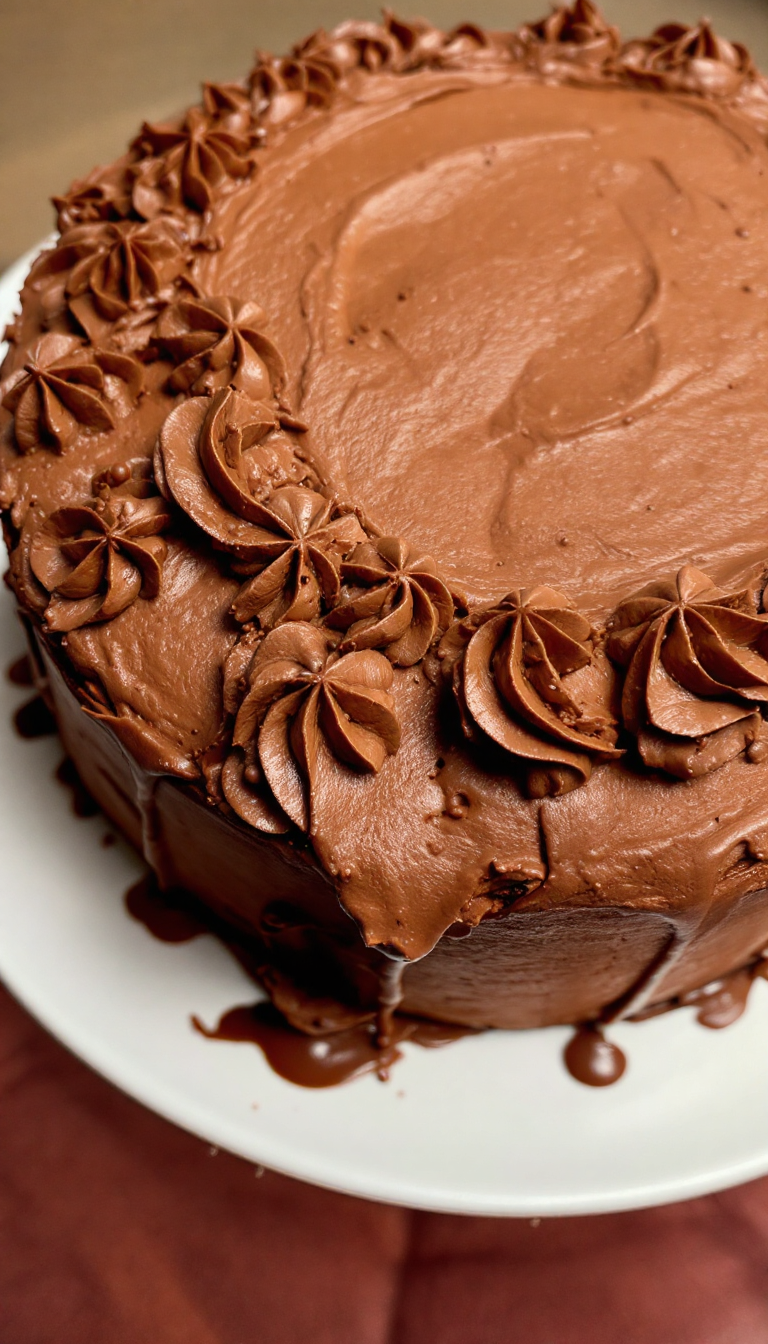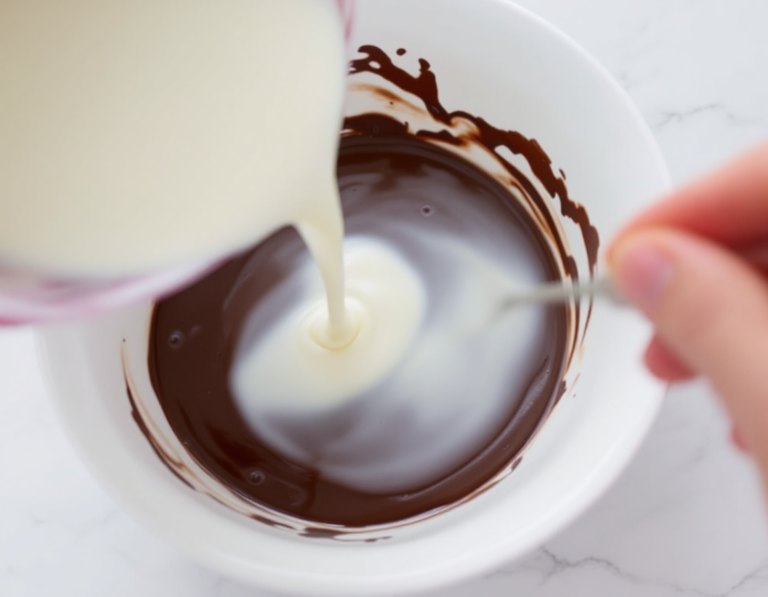
Ah, the classic yellow cake with chocolate buttercream frosting—like a hug in dessert form, isn’t it? It’s the kind of cake that doesn’t just sit on the table; it winks at you, beckoning with its golden layers and rich, creamy frosting. And let’s be honest, who doesn’t secretly love the way it crumbles just a bit, leaving sweet remnants on your fingers, a delicious reminder of the indulgence you just couldn’t resist?
Steps
- Preheat your oven to 350°F and prepare three 6-inch round pans by buttering and flouring them. In a large bowl, sift together the flour, cornstarch, baking powder, and salt, then whisk until well combined and set aside.
- In a stand mixer with a paddle attachment, cream the butter and sugar until the mixture becomes light and fluffy. Add the oil and vanilla extract, mixing until fully incorporated. Gradually add the eggs and yolks one by one, mixing on medium-low speed, and scrape down the bowl as needed.
- Alternately add the flour mixture and buttermilk to the butter mixture in three parts, mixing just until combined. Evenly distribute the batter into the prepared cake pans. Bake for about 30 minutes, then let the layers cool in the pans for a minute before inverting onto a wire rack to cool completely.
- While the cake layers cool, prepare the chocolate buttercream. Start by melting the semisweet chocolate with 1/4 cup of milk in the microwave for about 30 seconds, stirring until smooth. In another bowl, mix the cocoa powder with 1/4 cup of melted butter.
- In a stand mixer, cream the remaining butter, then add the cocoa mixture, mixing until combined. Scrape the sides of the bowl, then add the salt and powdered sugar, mixing on low until incorporated.
- Pour the cooled chocolate ganache into the buttercream, adding milk one tablespoon at a time until the frosting reaches a silky smooth consistency.
- Spread or pipe a layer of buttercream onto the first cake layer, add the next layer, and repeat until the cake is fully assembled.
- Cover the entire cake with the remaining buttercream, using a spatula to create a smooth, rustic finish.

Ingredients
- 2 ¼ cups (270g) all-purpose flour
- ¼ cup (35g) cornstarch
- 1 ¼ cups (250g) granulated sugar
- 2 teaspoons baking powder
- ½ teaspoon salt
- ½ cup (113g) unsalted butter, at room temperature
- ¼ cup (60mL) vegetable oil
- 3 large eggs, at room temperature
- 2 egg yolks
- 1 tablespoon (15mL) vanilla extract
- 1 cup (240mL) buttermilk
- 1 ¼ cups unsalted butter (1 cup at room temperature, ¼ cup melted)
- ¼ cup cocoa powder
- ½ teaspoon salt (adjust to taste if sensitive to salt)
- ½ cup milk, divided
- 1 pound (450g) powdered sugar
- ? cup semisweet chocolate
Nutritional Values
Calories: 8088kcal | Carbohydrates: 1008g | Protein: 72g | Fat: 432g | Saturated Fat: 276g | Cholesterol: 1764mg | Sodium: 2868mg | Potassium: 2580mg | Fiber: 24g | Sugar: 732g | Vitamin A: 11556IU | Calcium: 1032mg | Iron: 24mg
FAQ
- What is the primary flavor of a yellow cake?
- Yellow cakes predominantly feature a vanilla flavor. They are often paired with chocolate frosting but can also be enjoyed with vanilla buttercream or any other frosting of your choice, as their mild taste complements a variety of flavors.
- How does a yellow cake differ from a vanilla cake?
- Yellow cake is a variant of vanilla cake. While yellow cakes include whole eggs and butter, resulting in their distinct color, vanilla cakes can be white if they use only egg whites and oil to maintain a lighter appearance.
- How long can this cake be stored?
- This cake can be stored for up to three days in the refrigerator. Alternatively, if you freeze the unfrosted, well-wrapped cake layers, they can last for up to three months. It’s best served at room temperature, so let it warm up before serving.
- How can you tell when a cake layer is fully baked?
- To determine if a cake layer is done, observe if the edges start pulling away from the pan. Once this happens, insert a toothpick or skewer into the center; it should come out clean, and the center should bounce back when lightly pressed.
- What should I do if I don’t have cake flour?
- If you don’t have cake flour, you can use a mix of all-purpose flour and cornstarch as a substitute. Alternatively, you can simply use 1 1/2 cups of cake flour in the recipe.
Tips
- For even and moist cake layers, consider using cake strips. These can be purchased online or crafted at home using foil and paper towels.
- Accurate flour measurement is crucial to avoid a dense cake. Use a kitchen scale if available, or fluff the flour with a spoon, gently fill your measuring cup, and level it with a knife.
- If you don’t have 6-inch pans, adjust the recipe accordingly: double it for 8-inch pans or triple it for 9-inch pans.
- Consistently scrape down the mixing bowl while preparing both the cake batter and the frosting to ensure a smooth and uniform texture throughout.
Equipment
- Stand Mixer – Useful for creaming butter and sugar and mixing batter.
- 6-Inch Round Cake Pans – If you don’t already have the specified size.
- Baking Strips – For getting flat cake layers.
- Digital Kitchen Scale – For measuring flour and other ingredients accurately.
- Piping Bags and Tips – For applying buttercream if you want a more professional finish.
- Wire Cooling Rack – To allow cake layers to cool evenly.
- Spatula – For smoothing and creating effects with buttercream.